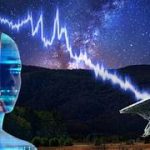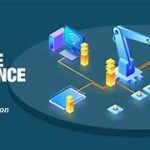AI Applications in Analyzing Signals from Space Telescopes
The universe holds countless mysteries, and space telescopes are our windows into the vast cosmos. From detecting exoplanets to studying distant galaxies, these instruments generate massive amounts of data. Analyzing this data manually is daunting and time-consuming, but artificial intelligence (AI) is revolutionizing how we interpret the signals captured by space telescopes. By automating complex tasks, enhancing precision, and uncovering previously unseen patterns, AI is transforming the field of astronomy.
1. The Role of Space Telescopes in Modern Astronomy
Space telescopes like the Hubble Space Telescope, James Webb Space Telescope (JWST), and Kepler have provided groundbreaking insights into the universe. They:
- Capture electromagnetic signals across various wavelengths, from visible light to infrared and X-rays.
- Help identify celestial phenomena like black holes, supernovae, and cosmic microwave background radiation.
- Provide data for studying the formation and evolution of stars, galaxies, and planetary systems.
The complexity and volume of data generated necessitate advanced tools for analysis, making AI an invaluable asset.
2. AI Techniques Used in Signal Analysis
AI leverages various technologies to analyze and interpret signals from space telescopes:
2.1 Machine Learning
Machine learning (ML) algorithms are designed to identify patterns and make predictions based on data. Applications include:
- Exoplanet Detection: ML algorithms analyze light curves from stars to detect periodic dips caused by orbiting planets.
- Galaxy Classification: Systems like convolutional neural networks (CNNs) categorize galaxies based on shape, size, and other characteristics.
- Anomaly Detection: Unsupervised learning identifies unusual signals that may indicate novel phenomena.
2.2 Computer Vision
Computer vision enables AI systems to process and interpret visual data from telescopes:
- Image Enhancement: AI sharpens images blurred by noise or distortions, revealing finer details.
- Object Identification: Neural networks pinpoint celestial objects such as stars, asteroids, and distant galaxies.
- Feature Recognition: Algorithms identify features like craters on moons or rings around planets.
2.3 Natural Language Processing (NLP)
NLP facilitates better interaction between astronomers and AI systems by:
- Translating scientific queries into actionable commands for data analysis.
- Summarizing research findings from vast datasets.
- Generating concise descriptions of detected phenomena.
2.4 Reinforcement Learning
Reinforcement learning trains AI systems to optimize processes through trial and error. This is particularly useful for:
- Telescope Operations: Automating the adjustment of telescope settings to improve signal capture.
- Data Processing: Refining algorithms for efficient and accurate analysis.
3. Applications of AI in Space Signal Analysis
3.1 Exoplanet Discovery
AI has significantly advanced the search for planets beyond our solar system:
- NASA’s Kepler and TESS missions use AI to analyze light curves, identifying over 5,000 confirmed exoplanets.
- Deep learning models detect subtle variations in starlight that traditional methods might overlook.
- AI accelerates the classification of planetary candidates, enabling faster validation.
3.2 Studying Cosmic Events
AI helps astronomers study transient cosmic events, including:
- Supernovae Detection: Algorithms analyze time-series data to identify the sudden brightness spikes characteristic of supernovae.
- Gravitational Wave Analysis: AI sifts through signals from LIGO and Virgo detectors to identify and localize gravitational waves.
- Gamma-Ray Bursts: Machine learning identifies and categorizes these high-energy phenomena with unprecedented speed.
3.3 Mapping the Universe
AI contributes to creating detailed maps of the universe by:
- Analyzing data from telescopes like Sloan Digital Sky Survey (SDSS) to chart millions of galaxies.
- Identifying large-scale structures, such as galaxy clusters and filaments.
- Enhancing 3D mapping techniques to study the distribution of dark matter.
3.4 Unveiling Hidden Patterns
AI’s ability to uncover hidden patterns has led to groundbreaking discoveries:
- Quasar Identification: Neural networks detect quasars—extremely luminous objects powered by supermassive black holes.
- Pulsar Detection: AI identifies pulsars by analyzing radio wave signals with high precision.
- Search for Extraterrestrial Intelligence (SETI): Machine learning scans vast datasets for anomalies that might indicate extraterrestrial communication.
4. Challenges in AI-Driven Signal Analysis
4.1 Data Overload
Space telescopes generate terabytes of data daily. Efficiently processing this data requires:
- Scalable AI algorithms capable of handling large datasets.
- Cloud computing resources for distributed data analysis.
4.2 Bias in Training Data
AI models depend on training data, which may introduce biases:
- Limited datasets can skew model predictions.
- Efforts are needed to create diverse and representative datasets.
4.3 Interpretability
Understanding AI’s decision-making process is critical for scientific validation:
- Explainable AI techniques are essential for ensuring trust in results.
- Visualization tools help researchers interpret AI findings.
4.4 Hardware Constraints
Space-based AI systems face limitations in computational power and energy:
- Edge AI solutions optimize algorithms for onboard processing.
- Hybrid systems leverage both onboard and ground-based AI capabilities.
5. Future Prospects of AI in Astronomy
AI’s role in space signal analysis is poised to expand as technology advances:
5.1 Next-Generation Telescopes
Upcoming telescopes, such as the Roman Space Telescope and Extremely Large Telescope (ELT), will rely heavily on AI:
- Enhancing image resolution and sensitivity.
- Processing unprecedented volumes of data.
- Identifying faint and distant objects in the universe.
5.2 Real-Time Decision-Making
AI will enable real-time analysis and decision-making for:
- Dynamic adjustments to telescope settings based on incoming data.
- Automated responses to transient events, such as asteroid flybys or gamma-ray bursts.
5.3 Collaborative Research
AI will foster collaboration between astronomers and AI specialists:
- Developing open-source tools and platforms for data sharing.
- Training interdisciplinary teams to maximize AI’s potential in astronomy.
5.4 Citizen Science
AI-powered platforms will empower citizen scientists to contribute to space exploration:
- Tools like Galaxy Zoo use AI to assist volunteers in classifying galaxies.
- Crowdsourcing initiatives accelerate data analysis while engaging the public.
6. Conclusion
AI has become an indispensable tool for analyzing signals from space telescopes, transforming how we explore the cosmos. By automating data processing, enhancing accuracy, and enabling real-time decision-making, AI empowers astronomers to uncover the universe’s deepest secrets. As AI technology continues to evolve, its integration with next-generation telescopes will unlock new frontiers in our quest to understand the cosmos.
AI for Mapping and Exploring Extraterrestrial Terrains
Space exploration is entering a new era, driven by the need to map and explore extraterrestrial terrains for scientific research, resource utilization, and potential human habitation. AI has become a cornerstone in these efforts, offering unparalleled capabilities in navigation, data analysis, and autonomous decision-making. From mapping the surface of Mars to exploring the icy moons of Jupiter, AI enables detailed analyses and efficient mission execution in the harshest environments.
1. The Need for Extraterrestrial Mapping and Exploration
Mapping extraterrestrial terrains serves several critical purposes:
- Scientific Research: Studying planetary geology, climate, and potential signs of life.
- Resource Utilization: Identifying water, minerals, and other resources for in-situ utilization.
- Human Exploration: Preparing for human missions by understanding terrain challenges and potential hazards.
The sheer complexity and vastness of these environments necessitate advanced tools, making AI indispensable.
2. AI Techniques for Terrain Mapping
AI employs a variety of techniques to analyze and map extraterrestrial terrains:
2.1 Machine Learning
- Terrain Classification: Algorithms analyze surface features to categorize terrains, such as craters, valleys, and dunes.
- Anomaly Detection: Identifies unusual features that may indicate geological or biological activity.
2.2 Computer Vision
- Image Analysis: AI processes images from orbiters and rovers, enhancing resolution and identifying key features.
- 3D Reconstruction: Converts 2D images into 3D models for better understanding of terrain topology.
2.3 Reinforcement Learning
- Autonomous Navigation: Enables rovers to navigate complex terrains without human intervention, avoiding obstacles and selecting optimal paths.
- Resource Optimization: Guides exploration strategies to maximize scientific output while conserving resources.
3. Applications in Extraterrestrial Exploration
3.1 Mars Exploration
AI has played a pivotal role in Mars missions:
- Curiosity and Perseverance Rovers: Use AI to navigate, analyze soil samples, and detect organic compounds.
- Terrain Mapping: AI processes orbital images to create detailed maps, aiding in site selection for landers and rovers.
3.2 Lunar Missions
- Surface Analysis: AI identifies regions of interest, such as water ice deposits in permanently shadowed craters.
- Navigation: Guides autonomous lunar rovers to explore challenging terrains.
3.3 Exploration of Icy Moons
- Europa and Enceladus: AI analyzes data from orbiters to identify potential subsurface oceans and assess habitability.
- Probe Deployment: Guides autonomous probes to traverse icy surfaces and penetrate subsurface layers.
3.4 Asteroid and Comet Exploration
- Resource Identification: AI identifies valuable minerals and water on asteroids for potential mining.
- Trajectory Optimization: Calculates efficient paths for spacecraft to rendezvous with and study small celestial bodies.
4. Challenges and Limitations
4.1 Data Transmission Delays
- Latency: Delays in data transmission necessitate autonomous decision-making by AI systems.
- Limited Bandwidth: Efficient data compression and prioritization algorithms are required.
4.2 Environmental Constraints
- Extreme Conditions: AI systems must function reliably in harsh environments with extreme temperatures and radiation.
- Energy Limitations: Algorithms must be optimized for low-power operations.
4.3 Model Robustness
- Uncertainty: AI models must adapt to incomplete or ambiguous data.
- Validation: Ensuring the accuracy and reliability of AI outputs is critical for mission success.
5. Future Prospects
5.1 Integration with Advanced Robotics
- Swarm Robotics: Coordinated AI-driven robots can explore larger areas more efficiently.
- Human-AI Collaboration: Enhances decision-making by combining human intuition with AI precision.
5.2 Interplanetary Missions
- AI will play a crucial role in upcoming missions to Venus, Titan, and beyond, enabling deeper exploration and discovery.
5.3 Resource Utilization
- In-Situ Resource Utilization (ISRU): AI can identify and extract resources, reducing reliance on Earth-based supplies.
5.4 Habitability Studies
- AI-driven analyses will assess the potential for human habitation on other planets, guiding future colonization efforts.
6. Conclusion
AI is revolutionizing the exploration of extraterrestrial terrains by enabling detailed mapping, autonomous navigation, and efficient resource utilization. As we venture further into the cosmos, AI will remain a vital tool in unraveling the mysteries of other worlds and paving the way for humanity’s interplanetary future.


